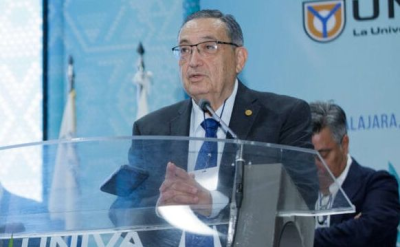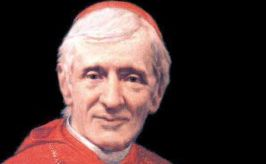Review of Pope Leo XIV's Apostolic Letter Drawing New Maps of Hope
In today's Catholic universities, two languages coexist, often without dialogue: the language of rankings and accreditation, on the one hand, and the language of the Gospel and tradition, on the other. The first demands efficiency, measurable impact and global competitiveness. The second speaks of the person, dignity and the communitarian search for truth. Is it possible for these two languages to dialogue without one ending up annulling the other? Can a Catholic university be academically excellent without betraying its identity, or are we condemned to choose between scientific quality and evangelical fidelity?
The publication of Pope Leo XIV's apostolic letter Designing New Maps of Hope comes at a special time. Sixty years after the declaration Gravissimum educationis, Catholic universities face challenges that the Second Vatican Council could not foresee: the radical fragmentation of knowledge, the accelerating digitization of teaching, the mercantilist pressure on higher education, the ecological crisis and artificial intelligence. Faced with these challenges, it would be understandable to retreat into nostalgia or to become diluted in pragmatism. The Pope proposes a third way: creativity as fidelity, tradition as a laboratory for the future and unity as a shared task.
This document is neither a manual of good practices nor a theoretical treatise. Rather, it is an invitation to rethink, from the ground up, what it means to be a Catholic university in the 21st century. What anthropology underpins our curricula and our forms of evaluation? How can we weave together what time has fragmented without falling into superficial syntheses? How can Catholic universities form "constellations" that guide in the dark, rather than compete for crumbs of prestige? How can we guarantee that academic freedom does not lead to individual arbitrariness or institutional conformism?
The letter recovers the living memory of a tradition that, far from being a burden, is presented as a "compass that continues to point the way" (1.3). History is not nostalgia here, but a source of wisdom for understanding and responding to the challenges of the present. From the Fathers of the desert to Newman, from the first medieval universities to modern educational congregations, the Church has been able to generate original responses to each era. Today it is up to us to continue this creative tradition.
Creativity as evangelical fidelity
One of the most provocative aspects of the letter is his vision of the role of creativity. The Pope reminds us that educational communities that allow themselves to be guided by Christ "do not withdraw, but are relaunched; they do not build walls, but build bridges. They react with creativity". (1.1). This creativity is not a whim, not just a formal innovation, but fidelity to the Gospel that "does not grow old but makes all things new (1.1)".
For the Catholic university, this implies a radical challenge: to assume that creativity is not optional but constitutive of its identity. We cannot take refuge in "it has always been done this way" (3.1), because that would be to betray the very tradition that constitutes us. The history of Catholic education is precisely the history of original responses to concrete needs (cf. 2.1).
For the Catholic university, this implies a radical challenge: to assume that creativity is not optional but constitutive of its identity. We cannot take refuge in "it has always been done this way" (3.1), because that would be to betray the very tradition that constitutes us. The history of Catholic education is precisely the history of original responses to concrete needs (cf. 2.1).
Dignity, not indicators, as a criterion and objective
On the other hand, the Pope asks us that education should not be measured solely "in terms of efficiency: it is measured in terms of dignity, justice and the ability to serve the common good" (4.2). In times of rankings, impact metrics and quantitative evaluations, Leo XIV brings us back to the fundamental criterion: "dignity, justice, the ability to serve the common good" (4.2). A person is not "a 'profile of skills', it cannot be reduced to a predictable algorithm, but of a face, a story, a vocation" (4.1).
This is, perhaps, one of the most urgent challenges for our universities. How can we resist the mercantilist logic that reduces education to "a functional formation or an economic instrument" (4.1)? How to cultivate a "Christian formation (that) embraces the whole person: spiritual, intellectual, affective, social, bodily" (4.2) when accreditation systems primarily value measurable scientific productivity?
The letter does not propose a naïve rejection of academic excellence, but a reorientation of its meaning. Following Newman, whose "empathetic vision" is recovered (3.1), the aim is to avoid "a purely mercantilist approach" without renouncing rigor (4.2).
Reweaving what time has fragmented
The document invites us to understand the fragmentation of knowledge as an anthropological problem, not merely a methodological one, something we have already heard a lot in the context of the Global Education Pact. The Pope speaks of an education that does not separate "manual and theoretical, science and humanism, technique and conscience" (4.2), that does not want to "separate desire and heart from conscience: it would mean breaking the person" (3.1).
This integral vision demands, as the letter quotes Francis, "interdisciplinarity and transdisciplinarity exercised as wisdom and creativity" (7.1). It is not a matter of juxtaposing disciplines in specific activities, or in specific academic units, but of building a vision inspired by the "cosmology of the Christian paideia " (1.2), where unity is not imposed from outside but discovered from within, inspired by the very reality of the human person as the image of God.
For the Catholic university, this means radically rethinking the structures of its units and even the ways of evaluating the work of academics. How can we create spaces where "faith is not an added "matter", but the breath that oxygenates all other matters" (6.2)?
Educational constellations: an ecclesiology of service
The metaphor of "educational constellations" (1.2, 8.1) is a very interesting and potentially prolific image of the letter. Against the temptation of rivalry or isolation, the Pope proposes a living network where "each star has its own luminosity, but all together they trace a path" (8.1). Differences are "not burdens, but resources" (8.2).
This implies moving from competition to complementarity, from believing that my discipline is enough, to recognizing that we need what the other offers, from working isolated and locked up in our offices and laboratories, to creating research and teaching networks that transcend institutional and national borders.
This model is deeply rooted in the Gospel. Constellations are not bureaucratic structures, but living bodies born of an encounter with Christ. As the first Christian communities generated "experiences that are at once humble and strong, capable of reading the times" (1.2), today we are invited to collaborate, overcoming rivalry to show that "unity is our most prophetic strength" (8.1).
For Catholic universities, this implies moving from competition to complementarity, from believing that my discipline is enough, to recognizing that we need what the other offers, from working in isolation and enclosed in our offices and laboratories, to creating research and teaching networks that transcend institutional and national borders (8.2). It is interesting how the proposal hints at a reflection of a truly synodal ecclesial model at the heart of the Catholic university.
Anthropology as a shared responsibility
The letter poses one of its most complex challenges when it affirms that an anthropological reflection must be at "the basis of an educational style" (7.1), and that it cannot be delegated exclusively to a single discipline. In this sense, the Pope appeals that the "question of the relationship between faith and reason" should not be an "optional chapter" (3.1), and quoting Newman, he reminds us of a truth, often forgotten, but essential for the university: "religious truth is not only a part, but a condition of general knowledge" (3.1).
This means that the entire university community, from those who work in civil construction to those in theology, from students to administrators, must participate in this reflection on what the human being is. Not as a pious and segregated addition to a moment or a place in the university, but as the condition of all its work. Christian anthropology, which sees the person as the image of God (3.1), is not an optional presupposition, but an opening to the integral truth of man and, therefore, essential for all of us who inhabit the university.
This shared reflection requires, as the document points out, "a heart that listens, a gaze that encourages, an intelligence that discerns" (5.2). That is to say, it is a mission that implies a special model of university where the person is not fragmented into roles-student, academic, researcher, administrative, etc.-but is recognized as a living whole: with its existential questions, its search for meaning, its frailties and aspirations. This demands that the Catholic university be more than a space for the transmission of specialized knowledge: it must become an authentic "educational community" (3.1), a "we" where all participate in the reflection on what it means to be human in our time. It is not enough for theologians or philosophers to think about anthropology while others do their own thing. The question of the human being runs through all research, all teaching, all institutional decisions.
This means, concretely, that the engineer who teaches calculus accompanies people in formation; that the biologist who researches genetics cannot avoid the ethical questions his work raises; that the economist cannot separate efficiency from justice. As the letter insists, "we must not separate the desire and the heart from knowledge: it would mean breaking the person" (3.1). Specialization, necessary and valuable, should not lead us to forget that we form people whose "professionalism is imbued with ethics" (4.2), for whom technique or competence should be at the service of human dignity. Only from this profound understanding of the human being can we discern what knowledge is worth transmitting and for what purpose. This integral model contrasts radically with the functional university that forms from "competency profiles" for the labor market. Planning and moving in this direction is not an addition to true education, but its condition of possibility.
Expanding access to education, a question of identity
The letter insists that to educate is to "place the person at the center" (5.1), recognizing his or her "inalienable dignity" (5.1). But this centrality is not rhetoric: it is translated into concrete policies that the Catholic university must assume without ambiguity. Guarantee access to the poorest, support fragile families and promote scholarships (10.4). These are imperatives, not options. The Pope is categorical: "losing the poor" is tantamount to losing the school itself (10.4). A university that closes its doors for economic reasons has lost its Catholic identity, no matter how many external symbols it retains. Because "Gospel gratuity is not rhetoric: it is a style of relationship, a method and an objective" (10.4).
Academic freedom as a communal search for truth
"Truth is sought in community" and "freedom is not a whim but a response" (4.3). This implies understanding that the Catholic university is the place "where questions are not silenced and doubt is not forbidden, but accompanied" (3.1). It is a matter, then, of a profound and sometimes forgotten understanding of academic freedom, to understand it not as an individual choice but as a communitarian search.
Behind this model, education is shown as an act of hope in the human being and as an act of love and solidarity: "Every human being is capable of the truth, however, the path is much more bearable when it is advanced with the help of others" (3.2). Thus, we discover that truth does not impose; it is discovered in dialogue, in the contrast of perspectives, in the patience of discernment.
This protects the Catholic university from both dogmatic authoritarianism and skeptical relativism. It is not a matter of "raising the banner of possessing the truth" (4.3), but of maintaining confidence that truth exists and can be known, always imperfectly and always on the way.
History teaches us that every era required audacity: from the monks who preserved classical culture to the first universities born "from the heart of the Church" (2.2), from Calasanz opening free schools to Don Bosco inventing his preventive method.
Today, this audacity means asking about the meaning of artificial intelligence or ecological justice (7.2), about new forms of learning in digital environments (9.1-9.3). It means daring to question structures that may have worked in the past, but no longer meet today's needs.
The letter invites Catholic universities to be "laboratories of discernment, pedagogical innovation and prophetic witness" (11.1). This requires intellectual courage and inner freedom. As the Pope says, quoting St. Augustine: "our present is an intuition, a time that we live in and of which we must take advantage before it slips through our fingers" (11.2).
Tradition as a living transmission
The document reminds us that "educating is a task of love that is transmitted from generation to generation" (3.2). Tradition is not mechanical repetition, a copy and paste of concepts, formulations or customs. It is active memory, not a monolithic archive.
This dynamic understanding is essential for Catholic identity, because it is not a matter of preserving formulas, methods, concepts or terms, but of keeping alive the fire of the Spirit (2.1). Educational charisms "are not rigid formulas: they are original responses to the needs of each era" (2.1), which implies understanding them as a task that requires discernment and flexibility.
Pope Leo XIV's letter brings us back to the essential: either Christian anthropology articulates and permeates all our university work, or we will end up as efficient but evangelically empty institutions.
Navigating with hope
The letter Designing New Maps of Hope is not a document of nostalgia but of active hope. It is an invitation: "disarm your words, lift up your eyes, guard your hearts" (11.2). It is not a call to contemplative passivity, but to action born of discernment. To disarm is not to surrender; it is to recognize that truth cannot be conquered by violence - not even by dialectics alone. To raise one's gaze is not to evade reality, but to remember, like Abraham, that the stars promise fruitfulness even in the sterility of the present. To guard the heart is not to shut oneself in, but to protect the fire that is already within and that allows us to welcome and shelter the other.
The Catholic university finds itself at a crossroads that is, at bottom, theological: do we really trust that the truth can be known by the human being in community, or have we secretly given in to functional relativism that only measures impacts and rankings? Do we really believe that the person is the image of God himself, or do we end up reducing our educational praxis to forming "competence profiles"? Pope Leo XIV's letter brings us back to the essential: either Christian anthropology articulates and permeates all our university work, or we will end up being efficient but evangelically empty institutions.
What is at stake is not only a pedagogical model, but the very possibility of the existence of spaces where reason and faith meet without violence, where academic freedom does not degenerate into individualistic arbitrariness or comfortable relativism, where the search for excellence does not betray the service to the poorest. This possibility is not guaranteed, but is a task. As the letter reminds us: "every generation is responsible for the Gospel" (1.1), and we are that generation!
Will we be able to imagine new forms of university community where the word "integral" is not a slogan but a lived experience? Will we be able to build constellations that guide rather than compete for prestige? Yes, but only if we renounce the illusion of possessing the truth without ceasing to seek it passionately, only if we understand that tradition is not ballast but a sail unfurled, only if we recognize that the boldest creativity is, paradoxically, the deepest fidelity to the Gospel.
Dr. Fernando SOLER
Faculty of Theology, Pontificia Universidad Católica de Chile
Secretary of the Conference of Catholic Theological Institutions (IFCU-COCTI-CICT)
Original text issued in https://revistadialogos.uc.cl/constelaciones-de-esperanza-el-desafio-de-una-experiencia-integral-en-la-universidad-catolica/















No comment
Log in to post comment. Log in.